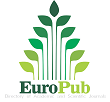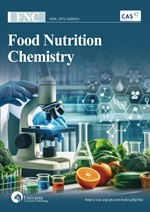Editorial for Clean Energy Science and Technology (Volume 2, Issue 2)
DOI:
https://doi.org/10.18686/cest.v2i2.202Abstract
All human activities are nothing more than the conversion and flow of energy, and energy flow processes that have irreversible effects on the Earth’s environment are of particular concern. Energy flow processes of interest are less often purely physical, and more often include complex chemical processes involving light, electricity, heat, and force, which are inevitably distributed in almost all human activities. Therefore, the optimization of these processes towards maximizing energy efficiency is inevitably the result of multi-physical and interdisciplinary collaborations, which will ultimately have a significant impact on the likelihood and schedule of achieving the goal of energy conservation and emission reduction. The authors of the articles in this issue, with creative thinking, rigorous arguments, and abundant data, have superbly illustrated the need for multiphysics and interdisciplinary synergy in clean energy science and technology from a wide range of perspectives.

Downloads
Published
How to Cite
Issue
Section
License
Copyright (c) 2024 Chenwu Wu

This work is licensed under a Creative Commons Attribution 4.0 International License.
References
1. Pan W, Huang S, Zhu J, et al. Polymeric field synergy principle: Revealing the intrinsic mechanism of screw channel optimization to enhance thermal management and process efficiency. Clean Energy Science and Technology. 2024; 2(2): 134. doi: 10.18686/cest.v2i2.134 DOI: https://doi.org/10.18686/cest.v2i2.134
2. Wang Y, Yang J, Xia L, et al. Research on screening strategy of Organic Rankine Cycle working fluids based on quantum chemistry. Clean Energy Science and Technology. 2024; 2(2): 169. doi: 10.18686/cest.v2i2.169 DOI: https://doi.org/10.18686/cest.v2i2.169
3. Lu Z, Yuan X, Jia X, et al. High-performance proton exchange membrane employing water-insoluble hybrid formed by chemically bonding phosphotungstic acid with polydopamine. Clean Energy Science and Technology. 2024; 2(2): 138. doi: 10.18686/cest.v2i2.138 DOI: https://doi.org/10.18686/cest.v2i2.138
4. Yang YX, He ZH, Cao HH, et al. Electrochemical reduction of CO to liquid C2+ with high Faradaic efficiency of amorphous CuO hybrid material wrapped in carbon and silica. Clean Energy Science and Technology. 2024; 2(2): 132. doi: 10.18686/cest.v2i2.132 DOI: https://doi.org/10.18686/cest.v2i2.132
5. Marouani I. Contribution of renewable energy technologies in combating the phenomenon of global warming and GHG emissions minimization. Clean Energy Science and Technology. 2024; 2(2): 164. doi: 10.18686/cest.v2i2.164 DOI: https://doi.org/10.18686/cest.v2i2.164
6. Zhang R, Zhou J. Ultrafast-adsorption-kinetics molecular sieving of propylene from propane. Clean Energy Science and Technology. 2024; 2(2): 126. doi: 10.18686/cest.v2i2.126 DOI: https://doi.org/10.18686/cest.v2i2.126
7. Li J, Zhang Y, Shen J. Commentary on “Country-specific net-zero strategies of the pulp and paper industry.” Clean Energy Science and Technology. 2024; 2(2): 155. doi: 10.18686/cest.v2i2.155 DOI: https://doi.org/10.18686/cest.v2i2.155
8. Dai M, Sun M, Chen B, et al. Country-specific net-zero strategies of the pulp and paper industry. Nature. 2023; 626(7998): 327-334. doi: 10.1038/s41586-023-06962-0 DOI: https://doi.org/10.1038/s41586-023-06962-0




.jpg)
.jpg)

